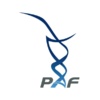PAF获得了 $32,912 research grant to Oleg Shchelochkov, M.D. and Charles P. Venditti MD, PhD at National Human Genome Research Institute, National Institutes of Health – 2018
“Diversion of Isoleucine and Valine Oxidative Pathway to Reduce the Propionogenic Load in Propionic Acidemia.”
Patients with propionic acidemia require lifelong protein restriction. In addition to taking a protein restricted diet, many propionic acidemia patients are also prescribed medical formulas. This dietary approach aims to decrease the intake of four amino acids that can become propionic acid. These four amino acids – 异亮氨酸, 缬氨酸, threonine, and methionine – are called essential, because they cannot be made in the human body and need to be supplied from foods. Too much protein intake creates a situation where excess can lead to a buildup of propionic acid in the body. On the other hand, limiting these four amino acids too much can lead to poor growth. 因此, patients’ diets are optimized to minimize propionic acid production while encouraging good growth. We wonder whether it is possible to increase dietary protein intake while minimizing the risk of propionic acid buildup.
To answer this question, we are planning to do a series of experiments in zebrafish. Why use zebrafish? Zebrafish share significant similarity to humans in how they process propionic acid. 此外, zebrafish reproduce and mature quickly, which are very important qualities to help search for new drugs that could be used to treat propionic acidemia. Our zebrafish are kept in a special building where the animals are being cared for by a dedicated team that includes scientists, veterinarians, engineers, aquatic specialists, and many others. They check on fish and feed them several times a day, maintain fish tanks, and keep their water very clean.
This type of facility is unique and had enabled our studies of metabolic diseases in zebrafish. Our ongoing studies have shown that zebrafish affected by metabolic diseases have symptoms that are very similar to patients. Even with treatment, affected fish have difficulty growing, get tired easily, have poor appetites and sometimes perish before adulthood. Using special genomic tools, we are planning to change in how the fish processes protein to direct it away from becoming propionic acid. As we make these changes to the biochemical pathways of propionic acidemia zebrafish, we will be carefully watching how these treatments improve their growth, development, appetite and survival. These experiments will help us understand how we can potentially reduce propionic acid toxicity while helping patients achieve a less restrictive diet.
乔尔·帕多(Joel Pardo)访谈 – Summer 2020
你能告诉我关于你自己以及你如何对科学感兴趣的吗?
我一直对科学感兴趣. 我认为最终促使我迈向科学事业的是我在加利福尼亚大学的研究经历, San Diego. 我从博士那里获得的指导. 约书亚·布鲁姆卡茨(Joshua Bloomekatz)帮助我发展了进行科学推理和欣赏职业发展机会的能力. 我从他那里学到了如何设计实验来回答重要的科学问题. 我们经常就我的项目方向进行长时间的讨论. 他帮助我理解了来自不同来源的观察结果,并培养了我自己的独立思维。, 我开始认为自己有一天会以医师科学家的身份为科学思维做出贡献.
在NIH训练期间, 您参与了一个使用斑马鱼寻找新疗法的项目. 您对研究斑马鱼有何发现感到兴奋和挑战??
大多数人都熟悉老鼠, 在科学中经常用于发现和测试新药. 与小鼠合作需要大量的工作才能拥有足够的实验动物. 斑马鱼, 另一方面, 一个繁殖周期可以产生数百个后代. 斑马鱼将卵直接放入水中, 这也使孵化后不久就更容易研究它们. 有点令人惊讶,处理丙酸的斑马鱼酶与人类中的酶非常相似. 斑马鱼的这两个特性使它们成为研究丙酸血症等疾病的令人兴奋的模型.
我在斑马鱼研究中最具挑战性的部分之一是它们的大小. 斑马鱼的后代很小, 测量不到四分之一英寸. 我不得不花很多时间在显微镜下看斑马鱼,并学习如何在不伤害它们的情况下移动它们。. 这可能很难,因为这些小动物在这个很小的年龄就很脆弱.
能告诉我们您的扩音项目吗?
在我的工作中, 我们能够得到斑马鱼, 丙酸血症相关基因的突变. 我需要了解丙酸血症对斑马鱼有何作用. 我们能够证明斑马鱼中的丙酸血症看起来很像我们在患者中看到的疾病. 丙酸血症的鱼食欲不佳, 生长不好, 并有移动困难. 使用特殊的遗传工具, 然后,我们尝试改变斑马鱼加工丙酸的方式并帮助它们存活更长的时间. 我们的初步结果证明是有希望的, 但是还需要做更多的工作.
在NIH完成培训后,您有什么计划?
NIH postbac计划是一项全日制研究奖,授予刚刚完成学士学位并且正在考虑从事科学或医学职业的学生. 我很幸运地加入了Dr.. 查尔斯·冯蒂蒂(Charles Venditti)的实验室 2 多年前在Dr.领导下的斑马鱼项目中工作. Oleg Shchelochkov. 我完全喜欢上bac后的经历. 回顾过去 2 years, 我觉得实验室, 特别是博士的指导. Shchelochkov, 促进和培养了我作为一名将来从事丙酸血症研究的医师科学家的成长. 在 2019 我申请了几所美国大学的医学博士/博士学位课程. 游历了六个多州并在许多很棒的大学进行了面试之后, 我最终决定在明尼苏达大学进行医师-科学家培训计划. 当我计划过渡到该计划时, 我目前正在寻找冬衣.
